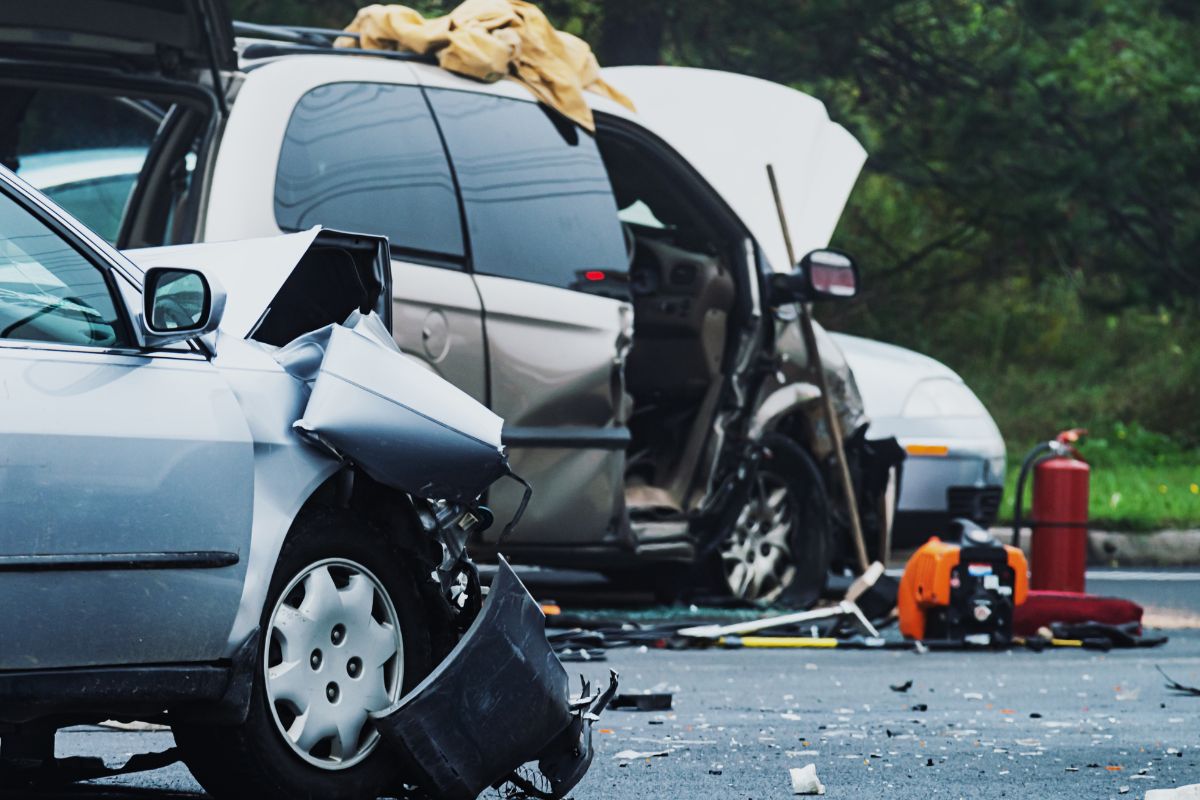Car accidents are one of the most common reasons for getting injured or dying across the world. While driving on a busy highway or a silent street, a moment’s mistake or sudden change can be hazardous. Recognizing the most frequent causes of car accidents is critical not only for protecting you and your loved ones while driving but also for knowing what to do if you ever end up in these unfortunate situations.
In this article, we will look at the car accident causes, their results, and how to cope if you are impacted.
Distracted Driving: A Growing Threat
Technology and distracted driving go hand in hand. The new and improved technology makes life easier, but it comes with a price. Unlike a few decades ago, the world is now filled with smartphones and various in-car devices that make driving multitasking even more tempting, such as texting, dialing, scrolling through social media, or even eating. With a multitude of things on your hands, the road will quickly get forgotten about.
Key distractions include:
- Texting or calling while driving
- Interacting with passengers
- Adjusting entertainment systems
- Reaching for objects inside the vehicle
A driver glancing away from the road for even two seconds doubles their risk of crashing. The consequences are often severe, especially at higher speeds.
Speeding: The Silent Killer
The speed at which a driver is driving dampens their ability to respond timely manner to any detected obstacles like pedestrians or vehicles. Accidents of any magnitude are far worse. Excessive use of speed continues unabated, notwithstanding awareness being a core driver for campaigns on safety in the use of motor vehicles.
Impacts of speeding:
- Longer braking distances
- Increased crash force
- Reduced effectiveness of safety devices
- Higher risk of rollover accidents
Speeding isn’t just illegal — it’s deadly. Slowing down can save lives.
Driving Under the Influence
Drunk or drug-impaired driving severely affects a driver’s judgment, coordination, and reaction time. Alcohol-related accidents remain a major issue, despite laws and public education.
Common substances contributing to impaired driving:
- Alcohol
- Marijuana
- Prescription medications
- Over-the-counter drugs that cause drowsiness
Victims of DUI-related crashes often face lifelong injuries. Legal consequences for the at-fault driver are also significant.
Reckless or Aggressive Driving
Reckless driving includes actions like tailgating, weaving through traffic, and disregarding traffic laws. Often fueled by road rage, these behaviors drastically increase the risk of collisions.
Examples include:
- Excessive lane changes without signalling
- Running red lights
- Ignoring stop signs or traffic rules
- Racing or street competitions
Reckless driving is not only dangerous but also criminally punishable in many jurisdictions.
Fatigued Driving
Driving while tired can be just as dangerous as driving under the influence. Fatigue impairs decision-making, slows reaction times, and may cause drivers to fall asleep at the wheel.
High-risk groups:
- Shift workers
- Long-haul truck drivers
- Individuals with sleep disorders
- Drivers on long road trips without breaks
Fatigue-related accidents often occur on monotonous roads like highways and during early morning or late-night hours.
Weather Conditions
Rain, fog, snow, and ice can drastically alter road conditions, leading to reduced visibility and traction. Even experienced drivers can struggle when weather conditions worsen.
Typical weather-related risks:
- Hydroplaning on wet roads
- Reduced visibility from fog or heavy rain
- Black ice and snow accumulation
- Wind pushing vehicles out of lane
Driving more slowly, using headlights appropriately, and maintaining a safe distance can help mitigate weather-related risks.
Failing to Yield or Obey Traffic Signals
Intersections are hotspots for accidents, often due to failure to yield or ignoring traffic signals. Running red lights or stop signs can lead to deadly side-impact (T-bone) collisions.
Common mistakes:
- Turning without yielding to oncoming traffic
- Entering intersections on a red light
- Misjudging gaps in traffic
- Rolling through stop signs
Traffic signals exist for a reason. Disobeying them places everyone at risk.
Poor Road Conditions and Maintenance
Sometimes the cause of an accident lies not with a driver, but with the road itself. Poorly maintained streets or highways can create dangerous scenarios.
Examples include:
- Potholes
- Faded lane markings
- Malfunctioning traffic lights
- Lack of signage or visibility
- Broken guardrails
In such cases, liability may lie with a city, municipality, or contractor responsible for maintaining the roadway.
Vehicle Malfunctions or Defects
Even when drivers behave responsibly, mechanical failure can lead to collisions. Faulty brakes, tire blowouts, or engine trouble can quickly turn a routine trip into a disaster.
Common mechanical causes:
- Brake failure
- Steering system malfunctions
- Tire defects or blowouts
- Engine stalling in traffic
Proper vehicle maintenance can reduce the likelihood of such accidents. However, if the issue stems from a manufacturing defect, the automaker may be liable.
Inexperienced Drivers
New drivers often lack the confidence or experience to handle unexpected situations, like merging on a highway, reacting to aggressive drivers, or navigating bad weather.
Common errors made by new drivers:
- Hesitating at intersections
- Overcorrecting when veering
- Misjudging distances or speed
- Failing to scan for hazards
Driver education is essential, but experience plays a huge role in road safety.
How Understanding Car Accident Causes Helps Victims
Understanding the specific car accidents causes can be vital when pursuing a personal injury claim. The cause of the accident helps determine:
- Who is legally responsible (liability)
- The type of compensation that may be awarded
- The strength of the victim’s case
For instance, if distracted driving led to the accident, phone records can serve as critical evidence. If poor road design played a role, a government entity may be held responsible. Each case is unique, and identifying the root cause of a crash is key to obtaining justice.
What to Do After a Car Accident
If you’re ever involved in a car accident, here are important steps to take:
- Ensure safety first: Move to a safe location and check for injuries.
- Call 911: Report the accident and seek medical attention if needed.
- Document the scene: Take photos, videos, and gather witness information.
- Exchange information: Get the other driver’s insurance and contact details.
- Avoid admitting fault: Let the investigation determine liability.
- Contact a personal injury attorney: Legal guidance ensures your rights are protected.
Conclusion
Car accidents are some of the most shocking events that disrupt life as we know it. While some car accident causes might be out of our control, many result from careless mistakes. Understanding the primary factors that lead to car crashes can help us minimize risk.
If you or someone you care about has suffered injuries in a car accident due to someone else’s reckless actions, you don’t need to single-handedly take care of everything. Derek L. Hall, PC, has handled complicated car accident claims for years. Their legal professionals know how to detect the reason behind your crash, put together a strong argument, and get you the compensation you need and deserve.












